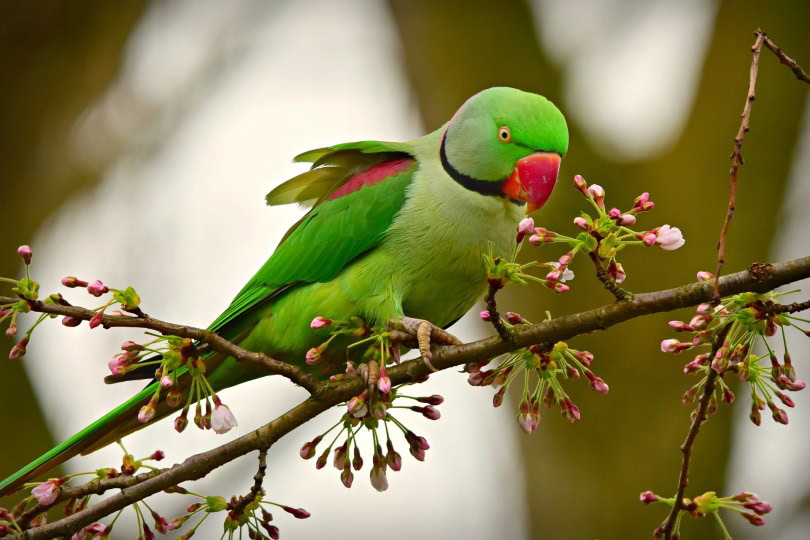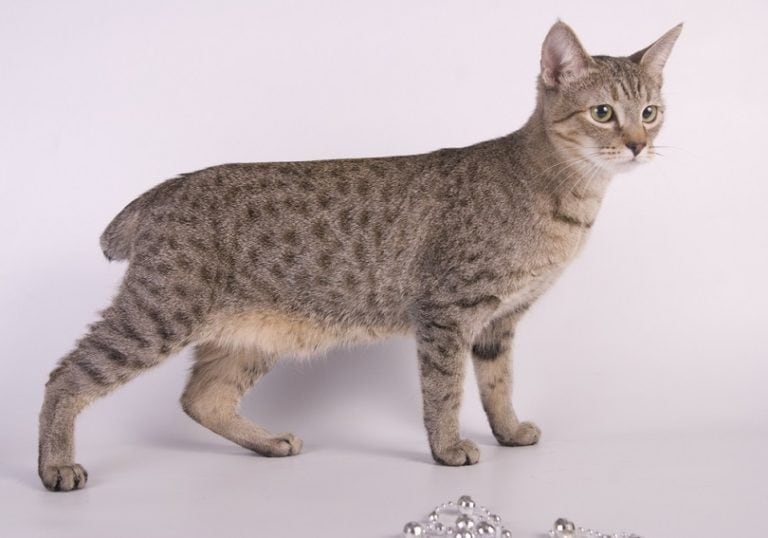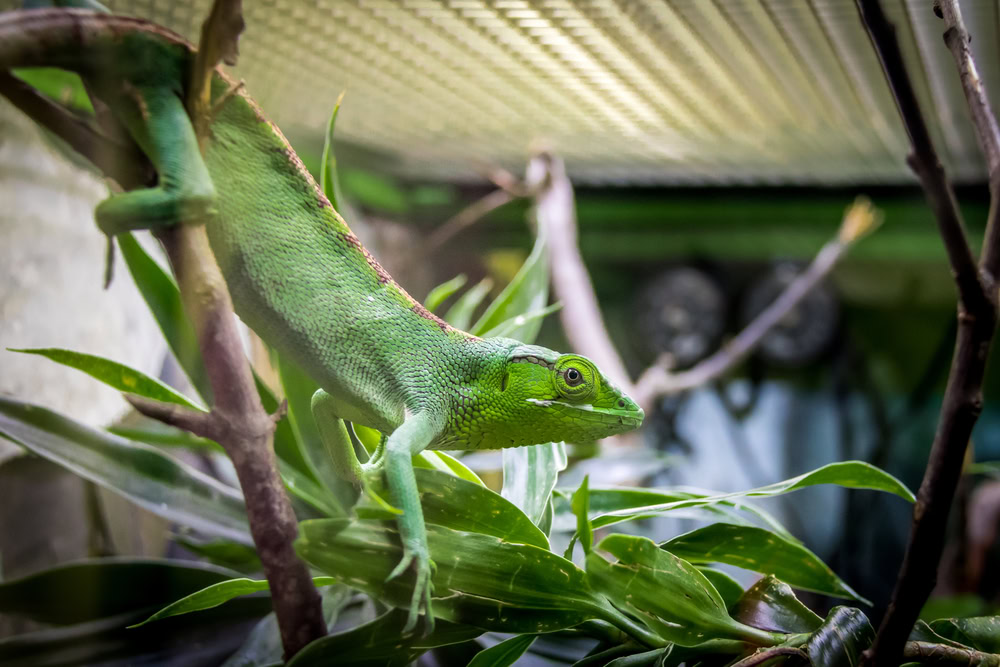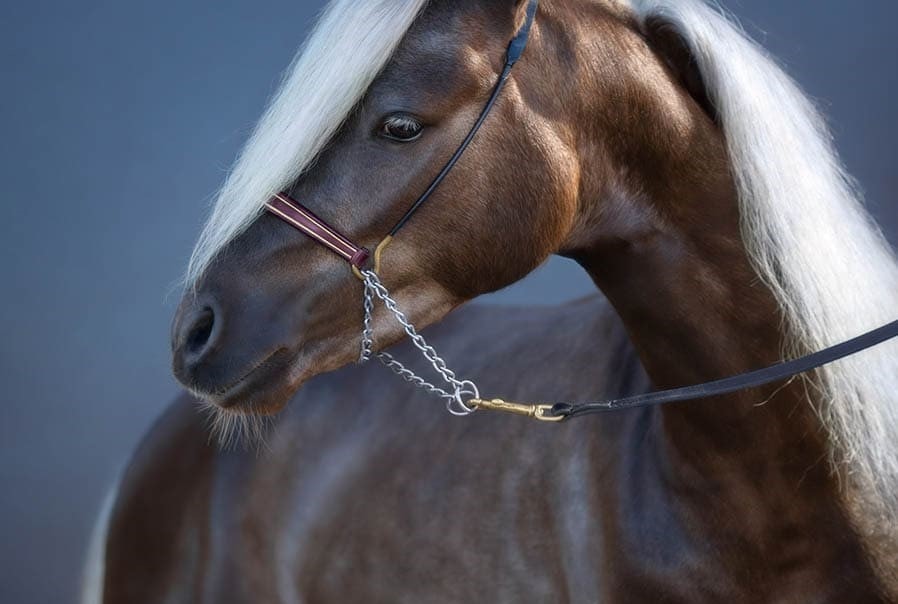Click to Skip Ahead
The African ring-necked parakeet has beautiful lime green plumage, a tiny red beak, and that famous black collar. These traits make this little parrot a much sought-after pet. Read on to learn all about its main characteristics and everything that it needs to thrive in captivity.

Species Overview
| Common Names | African ring-necked parakeet, rose-ringed parakeet |
| Scientific Name | Psittacula krameri |
| Adult Size | 16 inches |
| Life Expectancy | 20 to 30 years |
Origin and History
The ring-necked parakeet is a bird native to the rainforests of sub-Saharan Africa. Like other tropical birds, it belongs to the Psittaciformes order. That said, this exotic bird is ubiquitous in Europe today and is considered an invasive species. However, the African ring-necked parakeet is relatively rare in the United States.
The first appearances of these birds in Europe seem to date from the 1970s, following wild or accidental releases. Some of these events can be dated with precision. In 1974, a city zoo in Brussels released around 40 ring-necked parakeets. That same year, in the Paris region, a container in the Orly Airport area inadvertently let over 50 small parakeets escape. The same scenario happened again in 1990, this time at Paris-Charles-de-Gaulle Airport.
Since then, its population has continued to grow. The temperate climate in the coastal countries of Western Europe, especially England and the Netherlands, has favored the survival of these birds of tropical origin. To survive the winter cold, the parakeets rely on the food available in the feeders provided by the generous locals. Given how beautiful these parakeets are, it’s no wonder that they have quickly become well-loved pets by breeders and other bird lovers.
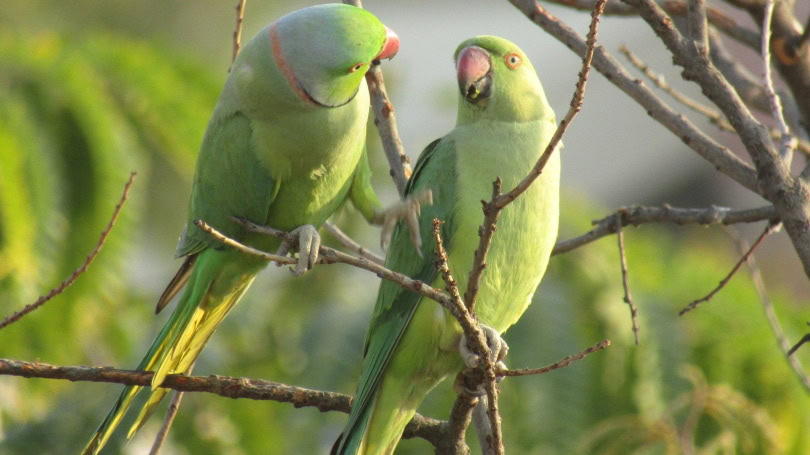
Temperament
Keeping this parakeet in captivity requires less demanding care than many other exotic species. Although known to be less demonstrative than other parakeet species, the African ring-necked parakeet is quite affectionate and playful. It also needs to be stimulated by games and interactions.
That said, this little parakeet is quite shy and exclusive and tends to trust only its owner. It demands a lot of attention and doesn’t appreciate being left on its own for too long. It is, however, a pleasant bird to live with and can even learn to repeat a few words. Also, it is essential that you get your bird used to being handled every day; otherwise, it will become shy. Despite all the attention, the African ring-necked parakeet can sometimes be aggressive, especially if it is afraid.
- Affectionate
- Playful
- Needs to be handled a lot
- Can be loud
- Timid
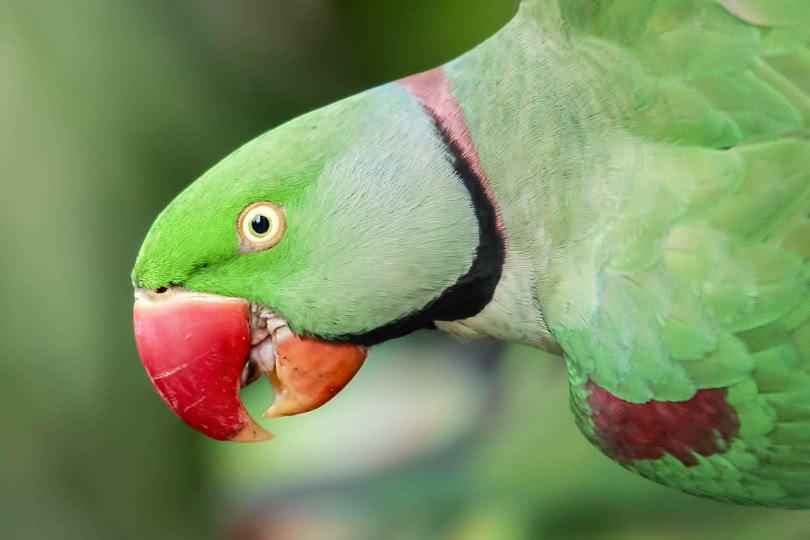
Speech & Vocalizations
The African ring-necked parakeet is able to learn a few words and repeat phrases, but it cannot imitate the human voice as well as some other parrots can. It can also be quite loud, screaming and chattering loudly when unhappy or excited.
African Ring-Necked Parakeet Colors and Markings
The African ring-necked parakeet has vibrant lime green plumage, with some blue on the tail and patches of yellow under the wings and on the belly. There is a sexual dimorphism in this species: The color of the plumage in the male is generally more intense than in the juvenile and the female. In addition, only the male has a black ring around his neck.
Here’s a list of the most common color mutations:
- Turquoise
- Olive
- White
- Blue
- Violet
- Grey
- Yellow
- Cinnamon

Caring for the African Ring-Necked Parakeet
This parakeet is quite hardy and easy to keep, unlike many other exotic species. However, for the well-being of your bird, you may need to adopt at least two individuals, given their gregarious temperament.
You will need to install:
- A large aviary that must be at least 13 feet long for a pair of parakeets
- One or two birdbaths
- A few perches
- A few toys
- A nest of 20 inches high by 12 inches wide
You can cover the bottom of the cage with wood chips.
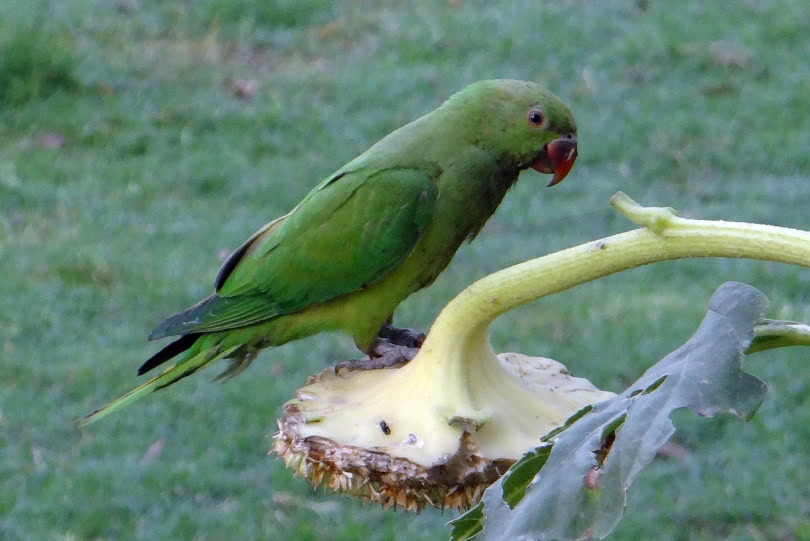
Common Health Problems
African ring-necked parakeets are generally healthy birds. However, they can suffer from diseases common to most exotic birds kept in captivity:
- Polyomavirus
- Aspergillosis
- Bacterial infections
- Vitamin A deficiency
- Psittacosis
Diet and Nutrition
The African ring-necked parakeet feeds mainly on fruits and seeds. In its natural habitat in Africa, it eats fruits like figs, mangoes, and guavas, along with seeds.
As a pet, the favorite foods of this bird are various plants (almonds, peanuts, berries, cereals, edible flowers, fruits, seed and legume germs, vegetables, legumes, nuts, pasta, quinoa, rice, and certain greens).
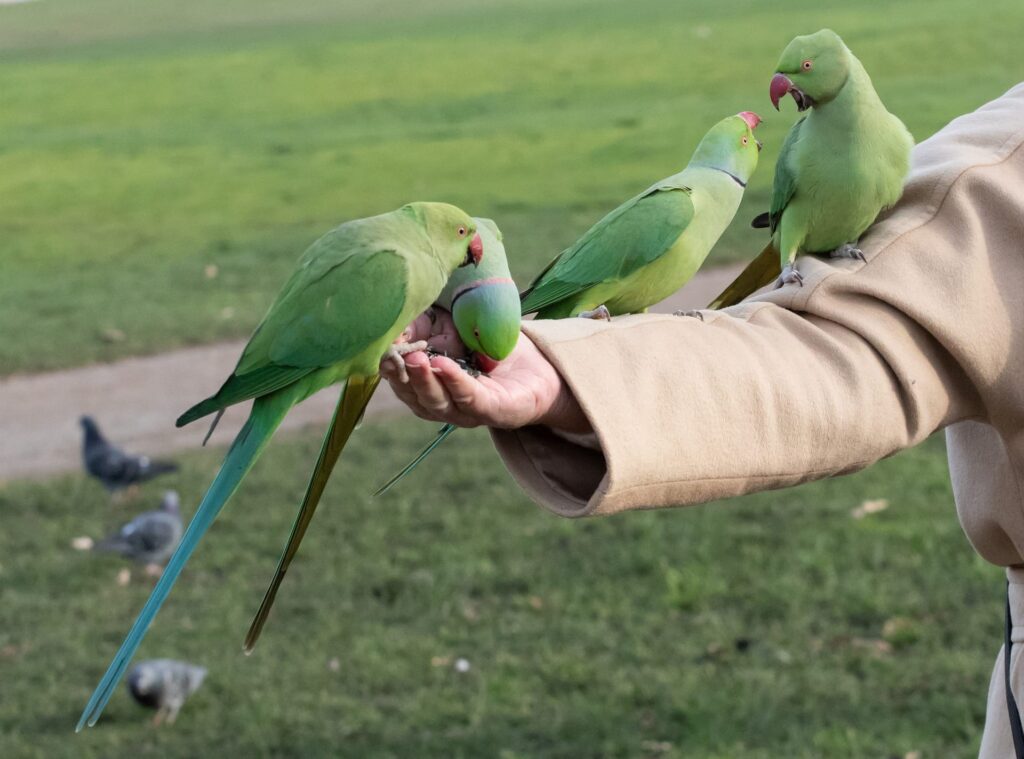
Exercise
The African ring-necked parakeet needs to spread its wings daily and get enough exercise to maintain optimal health.
In addition to an aviary large enough for your parakeet, offer it the opportunity to fly in a closed room for a few hours a day. Remember to close the windows and draw the curtains to avoid accidents. By working on your relationship with your pet, you can tame it and turn it into a “shoulder bird,” like other parrots that like to perch on the arm of their favorite human.
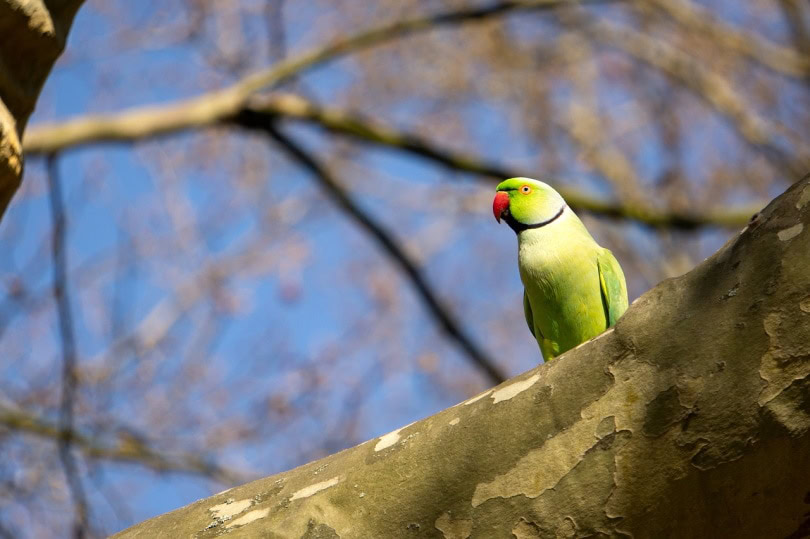
Where to Adopt or Buy an African Ring-Necked Parakeet
Bird rescue organizations and other shelters are good places to start your research if you want to adopt an African ring-necked parakeet. Many suffer from loneliness and health issues when left in the hands of irresponsible breeders. Indeed, they sometimes sell ring-necked parakeets much too young, which predisposes them to many health problems.
Also, note that the price of an African ring-necked parakeet varies between $400 and $700; that’s a significant asking price for this bird. But, if you’re willing to pay that price to acquire this exotic pet, seek advice from your vet so they can direct you to a trusted breeder.

Conclusion
The African ring-necked parakeet is recognizable by its beautiful green plumage, long tail with bluish tints, red and black beak, and the famous black ring around its neck. Discreet yet affectionate, it is a pleasant winged companion for any bird lover.
Also see:
Featured Image Credit: Mabel Amber, Pixabay
